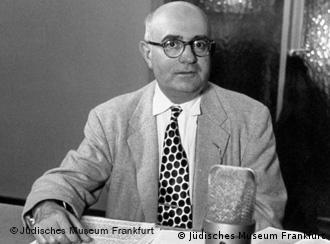Popular Culture
Introduction:
With knowing the theory it is important because, what the theory shows is how the popular culture/music is like. The theory shows how and why the music is sold and appealed to the large audience. With some of the theories they say that the large music industry is the ones who have the power to consume the audience because they know what the audience want and if you notice some of the artist is quiet similar, in the beat and sound depending on the genre. Some of the theory's I would be drawing upon is; Popular Culture, Antonio Gramsci - Hegemony, Frankfurt School and Theodor Adrono.
Popular culture:
- With popular culture is it the tastes and the lifestyle of the younger generation, this generation is mostly influenced by artists that either grew up with them so similar age or new to the industry that have the attributes that the younger generation is looking for such as one direction, Justin Bieber etc. People that are basically quiet high in the music chats. With these types of artist they fan/audience would follow them. With the popular culture it changes over certain periods of time.
- With popular culture there are two statements, with this people would believe that popular culture are used by elites and they would be the ones who tend to control the people below them. As for the other statement, it is where the popular culture is being rebelled to the other dominant groups which would make a sub-culture.

Antonio Gramsci - From My Power Point:
- Gramsci introduces the concept of hegemony. This occurs when ruling class values and ideas are dominates the society this effects every institutions including music.
- Capitalist societies, with the ruling – class relying heavily bourgeoisie. With Gramsci he believes that they are able to do this due to the control they have over the influential institutions, such as popular media like magazines, TV, music and different media platforms.
Hegemony The Theory:
- This is a media texts represented to the world usually in order to support a dominant ideology.
- With the hegemony is the way the people with the power keep and maintain their control of the ruling class.
- Most/all ideologies are pretty much considered hegemonic; with the power in the society is maintained by constructing ideologies which usually are promoted by the mass media.
- With them allowing it be promoted by the mass media it allows the young audience, what it does is allow them to follow it as that is what they would want so that their wouldn’t be any riots to the bourgeoisie.
- Hegemony is when the dominance if one social group over another such as the ruling class over all the other classes below them.
- With this theory what is claims is that the ideas of the ruling class come to be seen to the people as normal. As they are being seen as universal ideologies, with it being perceived to benefit everyone whilst it actually only benefiting the ruling class.
- Cultural hegemony is the sociological concept that the culturally diverse society can be ruled or be dominated by one of is social classes which is the ruling class.


The Birmingham School:
- They are known as the CCCS (Centre of Contemporary Culture Studies)
- This school includes a group of modern social theorists who developed thought about the social media, the culture and the critiqued older social media theorists.
- In the inaugural lecture that followed his appointment as Professor of English at the University of Birmingham in 1962, Richard Hoggart announced his intention to conduct research into ‘mass’ culture. Two years later, Hoggart had founded the Birmingham Centre for Contemporary Cultural Studies.
- Under the directorship of first Hoggart and then Stuart Hall and Richard Johnson, and with the commitment of Michael Green throughout, the Centre operated at the intersections of literary criticism, sociology, history and anthropology. Rather than focus on ‘high’ culture, the intention was to carry out group research on areas of popular culture such as chart music, television programmes and advertising.
-Work produced at the Centre showed that popular culture was not only worthy of academic study but often also politically significant. It showed, for example, the importance to young people of subcultures based around style and music, the ideological influence of girls’ magazines over their young readership.

Dick Hedige:
- He says that consumption is a active process in which the different audiences would have different readings into the same cultural products.
- He says that audiences are active and not passive. This is through the resistance of the pop culture creating the sub-cultures.

- They are known as the CCCS (Centre of Contemporary Culture Studies)
- This school includes a group of modern social theorists who developed thought about the social media, the culture and the critiqued older social media theorists.
- In the inaugural lecture that followed his appointment as Professor of English at the University of Birmingham in 1962, Richard Hoggart announced his intention to conduct research into ‘mass’ culture. Two years later, Hoggart had founded the Birmingham Centre for Contemporary Cultural Studies.
- Under the directorship of first Hoggart and then Stuart Hall and Richard Johnson, and with the commitment of Michael Green throughout, the Centre operated at the intersections of literary criticism, sociology, history and anthropology. Rather than focus on ‘high’ culture, the intention was to carry out group research on areas of popular culture such as chart music, television programmes and advertising.
-Work produced at the Centre showed that popular culture was not only worthy of academic study but often also politically significant. It showed, for example, the importance to young people of subcultures based around style and music, the ideological influence of girls’ magazines over their young readership.

Dick Hedige:
- He says that consumption is a active process in which the different audiences would have different readings into the same cultural products.
- He says that audiences are active and not passive. This is through the resistance of the pop culture creating the sub-cultures.

Frankfurt School:
- Frankfurt school said that the popular music is the end od the production line where everything is sounding similar to each other. With the music industry that exploit the mass production of music for the profit and the social control over the audiences, in the hope that they accept a certain ideology about the world that they living in.
- The music industry promotes absorption. Everything about these pop stars becomes a commodity (product). These includes their clothes, image, like and dislikes etc.


Theodor Adrono:
Background:
- Theodor
W. Adorno was a German sociologist, philosopher and musicologist known for his
critical theory of society.
- Theodor
W. Adorno was one of the most important philosophers and social critics in Germany after World War II.
- He was a leading member of the Frankfurt School
of critical theory, whose work has come to be associated with thinkers such as
Ernst Bloch, Walter Benjamin, Max Horkheimer and Herbert Marcuse, for whom the
work of Freud, Marx and Hegel were essential to a critique of modern society.
Ideology:
- Adorno (1903-69) argued
that capitalism fed people with the products of a ‘’culture industry’’ – the
opposite of ‘true’ art – to keep the passively satisfied and politically
apathetic (no interest).
- Adorno
adopted the term ‘culture industry’ to argue that the way in which cultural items
were produced was analogous (comparable) to how other industries manufactured
vast quantities of consumer goods.
- Adorno
argued that the culture industry exhibited an ‘assembly-line character’ which
could be observed in the synthetic, planned method of turning out its products.
- The
metaphor of the ‘assembly-line’ was used to stress the repetitive and routine
character of cultural production.
- Adorno
argued that the ‘culture industry’ operated in the same way as other
manufacturing industries. All work had become formalized organizational
procedures that were established for the sole purposes of making money.

Relation to Popular Culture:
- These
features are particularly true in the popular music industry. All popular music
products are commodities to be sold to an audience who believe that they are
consuming ‘true’ emotion.
- Popular
music products are characterised
by ‘standardization’ (they are basically formulaic and similar) and
‘pseudo-individualization’ (incidental differences make them seem distinctive,
but they’re really not).
- Products
of the culture industry maybe emotional or apparently moving, but Adorno sees
this as cathartic – we might seek some comfort in a sad film or song, have a
bit of a cry, and then feel restored again.
Pseudo
Individuality:
- Pseudo
individuality, meaning fake.
- Adorno
was critical of what they referred to as pseudo individuality. By this they
meant that artists within the cultural industry, when examined, had very little
differences whose uniqueness lies only in very minor modifications e.g. trade
marks.
- What Adorno meant by this is that up
and coming artists in our generation tend to all sound the same and the only
way to differentiate these artists are by minor talents they posses such as;
high pitch voices, large ranges or a unique sound (trade marks)
With the information above the research I have done of the theory's and theorist's, it has allowed me to gain a wider knowledge of the theory's. And with this it has allowed me to understand why things are the way they are and the reason it has happened. With this research it allows me to understand how the audience will process my music video if they would be passive or active. They way that I would present my artist is that they would have to have some sort of image so they can pull of the star image, my artist would have the themes and look that the mainstream audience would want.
Well done. The different schools of thought researched into well and applied to the music industry. Well stated who you agree with and why and who you will appeal to and how.
ReplyDeleteTo improve;
-model of Adorno's thoughts? Annotate the 'social elite' and 'massess' and what type of music is provided to both groups of people
-what theorists belong to the Frankfurt and Birmingham School? Make this clear (bullet points) before you go into the theory.
-think about the layout of your work, Frankfurt first, then Birmingham (with accurate theorists)